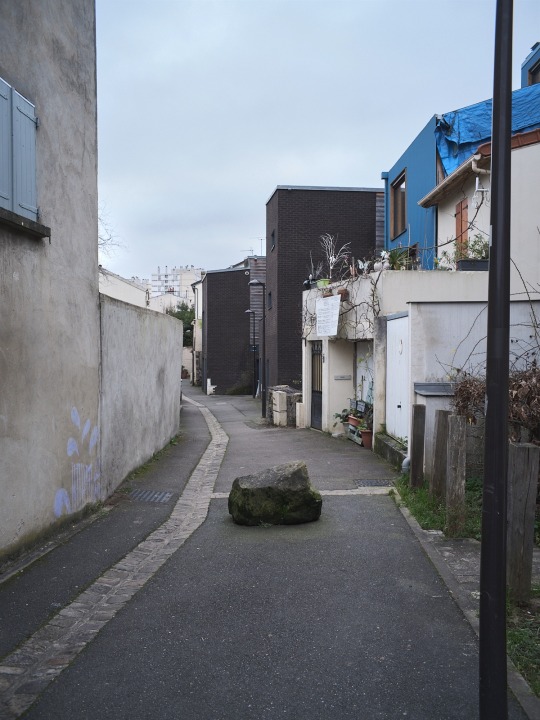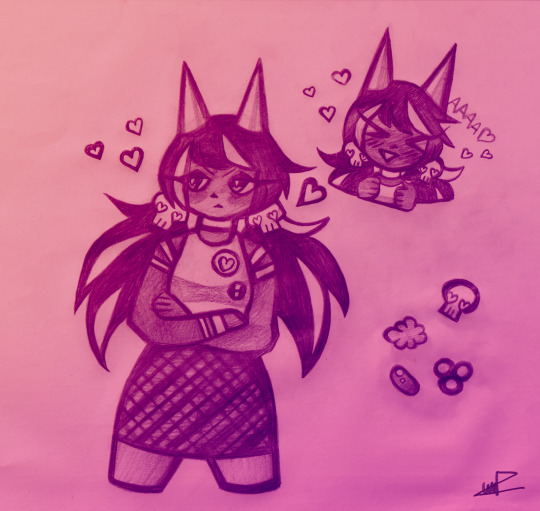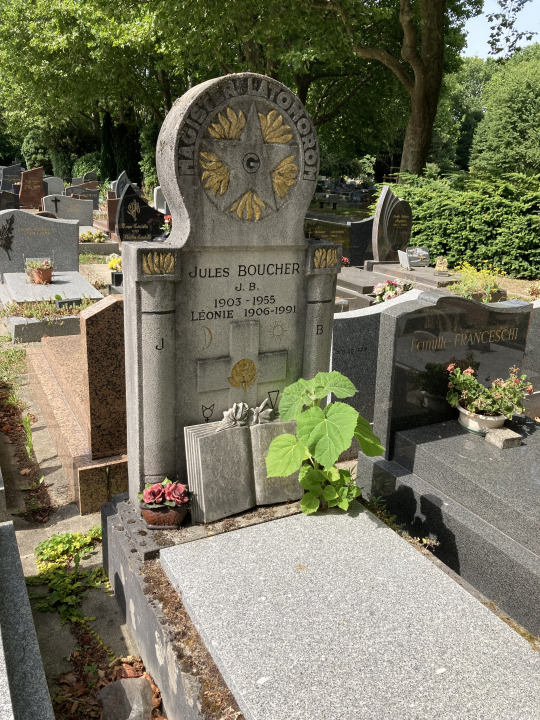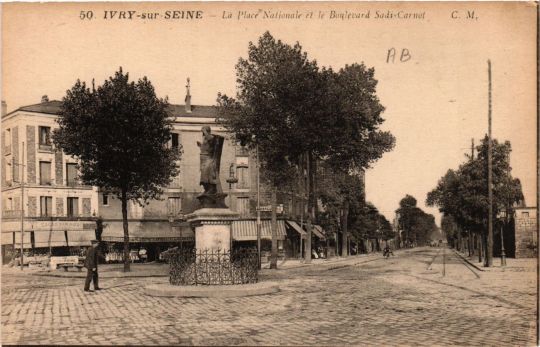#ivry
Text

2024 Paris, Ivry suburb
#2024#Paris#Ivry#suburb#photography#original photographers#color photography#fujigfx50r#streetphotography#pierre wayser
57 notes
·
View notes
Text

Ivry 2006.
32 notes
·
View notes
Text

Ivry ma ville ; vue sur le treizième arrondissement parisien, depuis Ivry-sur-Seine.
par une soirée de 2023
Pentax ME ; Ilford 400 hp5+
30 notes
·
View notes
Text

Usine d'emboutissage d'obus d'Ivry, amorçage du cassage au chalumeau oxyacétylénique, Val-de-Marne, 1914-1918.
4 notes
·
View notes
Text

View of Labastide-en-Val, Languedoc region of southern France
French vintage postcard, mailed in 1911 to Ivry
#historic#photo#briefkaart#ivry#vintage#region#en#labastide#val#southern#sepia#languedoc#photography#carte postale#postcard#mailed#postkarte#france#postal#tarjeta#ansichtskarte#french#old#view#ephemera#postkaart#1911
5 notes
·
View notes
Text

Ivry, février 2023.
10 notes
·
View notes
Photo

Doodle Dump 50
Got another doodle dump for you all!
Favorite/Most Popular: For as much as I may like my original characters here, Krystalroo was the MVP. She's adorable, I honestly think I could not have rendered Lemurfeature's design any better than I did, and a lot of people liked her very much. I think she's the best picture on this doodle dump, only followed closely by the Meg just to the right... Who loves you anyway.
Sybil is from Pseudoregalia, and the Umbrifriend on the bottom is a design of FalloutFox based on Umbreon from Pokemon. Cassandra on the top left belongs to Psycoyote. All the rest are mine!
For more information, you can look at the individual doodles earlier in my gallery- Doodle Dumps are just traditional at this point.
#anthro#furry#Doodle#Doodle Dump#Sketch#Drawing#Cassandra#Ivry#Emmi#Mik#Meryl#Meg#Rose#Yamri#Butter#Krystalroo#Umbrifriend#fanart
3 notes
·
View notes
Text
Edens Zero Chapter 269 Livestream Discussion/Review: Swords Dance
youtube
Ziggy is engaged in combat with his son, Void while the Edens Zero continues to reach it's final countdown for destruction, and the only way to prevent this devestation is through the help of the Four Shinning Stars. Witch has currently finished off everything on her end and only Valkyrie remains in her endevours against Brigandine. At the same time, Homura is still engaged in a clash against the mother of Dragons, Acnollea.
#Edens Zero Chapter 269#Shiki Granbell#Rebecca Bluegarden#Happy#Pino#Weisz#Witch#Ivry#Hermit#Valkyrie#Ziggy#Void#Leonard#Brigandine#Killer#Acnoella#Rave Master#Fairy Tail#Edens Zero#Hiro mashima#Anime#Manga#Anime/Manga#Youtube
4 notes
·
View notes
Photo

Ivry, resident cutie and fashion designer!
#my art#ivry#ocs#oc art#demon#demon art#demon oc#demon girl#character design#concept art#sketch#drawing
16 notes
·
View notes
Text

10 notes
·
View notes
Photo

@mrbenoitd aux côtés de la légende Mr Fox du groupe AKTUEL FORCE @foxlartdupop #HIPHOP #AKTUELFORCE #PARIS #PANAME #MARSEILLE #FRANCE #BREAK #POPPING. #ivry #ivrysurseine #ART #STREET #pédagogHIPHOP #pedagogHIPHOP. #F_O_S_comconcept #urbanXreporterzHIPHOP #HIPHOP #zulunation #urbanXreporterz https://www.instagram.com/p/Cm6zNweIMJF/?igshid=NGJjMDIxMWI=
#hiphop#aktuelforce#paris#paname#marseille#france#break#popping#ivry#ivrysurseine#art#street#pédagoghiphop#pedagoghiphop#f_o_s_comconcept#urbanxreporterzhiphop#zulunation#urbanxreporterz
2 notes
·
View notes
Text

2020 Paris, Ivry
#2020#Paris#Ivry#suburb#photography#original photographers#streetphotography#color photography#shotoniphone#iphone#pierre wayser
101 notes
·
View notes
Photo


Jules Boucher’s grave at the Ivry Cemetery.
2 notes
·
View notes
Text
“In agitational mode, the Union des Comités des Chômeurs de la Région Parisienne promoted a number of regional or national activities to elevate the sights of the local committees beyond the parochial horizons of municipal politics. It called for a protest outside the Chamber of Deputies on 12 November 1931 to force the demands of the unemployed on to the parliamentary agenda. The deputies – even the socialists, with the sole exception of the communists – refused to give the delegation a hearing and the socialists’ failure on this score became a mainstay of Le Cri’s recriminations. Turnout was relatively poor and the police estimated there were only 1,500 participants in the demonstration.
In fact, as a result of the protest, fifty demonstrators were arrested, eight of whom were identified as communists. Amongst their number were two Algerians, a Czech, two Turks and three women. Most were aged between eighteen and thirty-four and hailed from throughout the department of the Seine. A similar protest was organized for 12 January 1932. Le Cri des Chômeurs reported that 20,000 people had illegally assembled outside the Palais Bourbon. Demonstrators had responded to the police baton charge with courage, using doors and windows to defend themselves near the Invalides metro station. The police made 4,000 arrests and deported numerous foreign workers.
Reflecting on the events of 12 January, both Jacques Doriot and Benoıt Frachon privately identified errors and lack of preparation. Doriot maintained that to ignore the 180-day limit on unemployment relief was mistaken and that secrecy had hampered mobilization. Frachon believed that the demonstrations were unsatisfactory despite involving many more unemployed and their committees than the previous day of action. He blamed this failure on a clandestine mentality, police infiltration and an insufficiently militant approach. Despite some truth in these explanations, none of the leaders dared confront the key problem: the Comintern’s sectarianism and its flawed analysis of the situation. The leadership of the Confédération Générale du Travail Unitaire (CGTU) resolved to step up its work amongst the unemployed by various means. It sought to raise awareness through increased coverage in L’Humanité. Directives on the unemployed and for the day of action planned for 4 February would be circulated to the party and its affiliated unions.
...
Movements of the unemployed were volatile affairs and the Parisian movement’s ranks swelled rapidly in March 1932. At last a strong dynamic from below animated the Parisian movement of the unemployed. This month brought together both a peak in unemployment and a dramatic sharpening of activities on the part of the unemployed after police killed an unemployed demonstrator, named Edmond Fritsch. On 17 March the CdC (Comité des Chômeurs) of the 11th arrondissement delegated Fritsch to report on the soup kitchen in communist-run Ivry. On hearing of a demonstration against overtime at a building site in Vitry, Fritsch changed his plans and went along.
At 4 p.m., 200 unemployed gathered outside the site and employees stopped work to join them. A construction worker affiliated to the CGTU addressed the assembly, but soon after the police arrived and told the demonstrators to disperse. The ‘flics’ then attacked the demonstrators with batons, some police drawing revolvers and shooting. The workers replied with bricks and hurled the chant ‘murderers, murderers’. In the mêlée, the police shot Fritsch in the head and another demonstrator, Palaric, was wounded in the thigh. Le Cri’s special edition bore the headline, ‘Standing up to murderers! An unemployed man is killed by brutes acting on government orders. Assemble en masse for the funeral.’
The April issue of the paper reverberated with sympathy and anger over Fritsch’s death. Despite the failure of the press to condemn the police, 120,000 attended the funeral march according to Le Cri (though the police put the figure at just 15,000). Carpentry and building unions called twenty-four hour strikes for the funeral. Protests and messages of support were sent to Le Cri from the 5th arrondissement and Villepinte. The Gonesse CdC held a large protest meeting on 20 March. At Bezons, a hundred people demonstrated against the police despite simultaneously sending a large delegation to the funeral. At Argenteuil, a meeting of 600 elected their representatives to the commission paritaire (the tripartite committee that adjudicated benefit decisions), but boycotted the meeting because of the presence of the police commissioner who ‘had Fritsch’s blood on his hands’. On 24 March the Bobigny CdC organized a demonstration in honour of Fritsch and called for the arrest of ‘police murderers’. The Alfortville CdC published 20,000 leaflets and 300 posters to explain the murder. The 12th arrondissement CdC reported continuous activity since 20 March and an increase in sales of Le Cri from 200 to 800.
On 8 April the trial of those arrested during the Vitry incidents took place. Several hundred demonstrated outside, protesting that whilst Fritsch’s murderers walked free, two demonstrators faced jail. The court became the scene of another clash between police and the unemployed. The tragic tale did not end there. Palaric’s uncle (Palaric had been wounded on 17 March) and Fritsch’s widow lost a court case against the police for murder and were made to pay costs of 853 francs. The uncle died shortly afterwards so the costs fell to Fritsch’s unfortunate widow.
The aftermath of Fritsch’s death signalled the high point of the movement of the unemployed in Paris, but such tumultuous high emotion was bound to be short-lived. Fritsch’s death also highlighted the degree of repression exerted against the unemployed. The authorities monitored, infiltrated and physically harassed the movement of the unemployed. From the very first, the authorities prohibited demonstrations of the unemployed. Le Cri read like a catalogue of repression. On Christmas Eve, when around 1,000 unemployed protested at the conspicuous luxury of revellers at nightclubs in Montmartre, the police baton-charge shocked on-lookers, some of whom received truncheon blows themselves. On another occasion, police in the 15th arrondissement attempted to break up a meeting of 300 unemployed and arrest the speaker. They assaulted a disabled veteran and, when a woman worker who was passing spoke out against it, they arrested her too.
Given the ban on demonstrations, protesting for any length of time was deemed a victory. At Choisy-le-Roi, 600 unemployed were able to demonstrate for ten minutes before the police dispersed them and made two arrests. In Colombes, the balance of forces was reversed as 200 people were able to demonstrate for over an hour outside the mairie in the face of ten panic-stricken police. In Livry-Gargan, 350 unemployed were able to demonstrate for thirty minutes, half of the time in the presence of the police, before they were dispersed with two arrests. In Aulnay-sous-Bois, the police prevented workers attending a meeting outside the Westinghouse factory.
The difficulty of defying the ban on demonstrations should not be underestimated, because the municipal authorities could always summon the police to halt an unemployed protest. In Bondy, the socialist council called the police to disperse a delegation asking for more coal for the unemployed. In Noisy-leSec, the mayor put a stop the unemployed committee’s collection of funds. The police were also a factor in the anti-eviction campaign. In the 3rd and 4th arrondissements, the police arrested an evicted man and six unemployed persons who participated in a successful 200-strong anti-eviction demonstration.
The paper recounted harassment of even the most innocuous activities. At Aubervilliers, sellers of Le Cri were arrested and the number of police present when the unemployed signed on for benefit doubled. In the 13th arrondissement, the police arrested CdC leafleters who were complaining about the insulting treatment of the unemployed at the bureau de bienfaisance (poor law office). At Aulnay-sous-Bois, three young unemployed persons were arrested for distributing leaflets. At La Courneuve, the police arrested four CdC members who were selling membership cards. This repression restricted unemployed activity, especially the kind of militant action that the communists favoured.
Indeed, the mobilizations that followed Fritsch’s shooting constituted a paradox: they were the most sizeable and visible expression of unemployed anger to that date, yet the funeral march commemorated an event that showed the authorities’ resolve to use armed force if necessary, and indicated their physical superiority and brutality. Those marching on the funeral cortège must have understood that the balance of force was stacked against them. Despite the degree of mobilization, the political isolation and vulnerability of the movement of the unemployed was laid bare.”
- Matt Perry, “‘Unemployment Revolutionizes The Working Class: Le Cri des Chômeurs, French Communists and The Birth of the Movement of the Unemployed in France, 1931-1932,” French History, Vol. 16, No. 4, 2002. p. 454, 455-458.
#paris#confédération générale du travail unitaire#police violence#police killing#unemployed association#unemployed organizing#parti communiste français#resisting evictions#grande dépression#chomeurs#chomage#direct action#banlieus rouges#unemployed protest#the great depression#academic quote#ivry
1 note
·
View note
Text

La Seine, sous le pont Nelson-Mandela, à Ivry-sur-Seine, le 15 août 2023
0 notes
Text

Street scene in Ivry-sur-Seine, southeastern suburbs of Paris
French vintage postcard
#street#historic#photo#briefkaart#vintage#ivry#sur#sepia#photography#carte postale#paris#scene#postcard#postkarte#postal#tarjeta#ansichtskarte#french#old#ephemera#postkaart#southeastern#seine#suburbs#ivry-sur-seine
4 notes
·
View notes